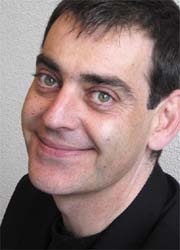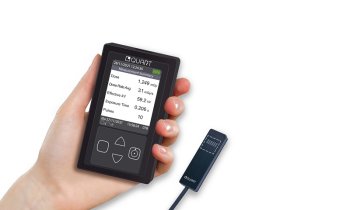Infusion technology from Fresenius Kabi
'Our ability to innovate defines what we do'
Infusion technology has come a long way in the past decade, explains Stéphane Ruton, Director of Strategic Marketing for IV Technology at Fresenius Kabi, which focuses on infusion therapies and clinical nutrition, as well as the respective medical devices.

The latter includes infusion systems such as syringe pumps, volumetric pumps and dedicated tubing sets. ‘Fresenius Kabi has more than 30 years’ experience in developing infusion systems, and our solutions are used in all hospital units,’ he points out.
The evolution of infusion technology involves two main stages, he adds: ‘In the 1980s and ‘90s, advances were essentially technical: system benefits from progress in mechanical and electronic design, and improvements in intrinsic performance – flow quality, occlusion detection and so on. In this decade, the spotlight has shifted onto dose-error prevention and better drug administration. Pumps have become more drug-specific through additional software features. With smart pumps and dose-error reduction software (DERS), the system in each hospital unit can now integrate settings for each drug used, reducing risk of medication errors.
‘The development of Quality Assurance policy in hospitals has also increased the need for more connectivity with the hospital information system, which has brought medication administration and therapy closer together. Today, our focus is becoming more clinical than technical, i.e. how drugs can be administered to support the optimal therapeutic effect, and thus meet specific patient needs.
‘Our ability to innovate defines what we do. In the early ‘90s, Fresenius Kabi launched infusion systems dedicated to specific clinical practices, for example the Orchestra range for critical care. Orchestra has a unique two-channel relay function that allows continuous infusion of drugs with a short half-life, thus increasing the patient’s haemodynamic stability while releasing staff for other duties. Fresenius Kabi also developed a patented auto-test for volumetric pumps. Each time a tube is inserted, the Occlusivity Check System (OCS) quickly checks that the tube is correctly positioned and that the sensors are working properly. Another innovative solution was our supervision system. If a device alarm is activated, it is immediately relayed to a central control station. The staff is alerted and can take prompt action.’
As or the future, he says a new field of investigation is opening up – how drugs are administered. ‘This will be one focus of our research. Systems will be designed to better obtain and control the effect of a drug: for example, target control infusion for anaesthetic drugs. Instead of setting a flow rate, the system maintains a set effect-site or plasmatic concentration of the drug, calculated by a pharmacokinetic model.
‘In parallel, rather than having libraries that simply tailor administration to single drugs, we will see libraries specific to single-patient, multi-drug protocols, especially in intensive care. In the coming years, this will result in infusion workstations where the amount of drug administered will be correlated with its desired effect, leading ultimately to the development of closed-loop infusion systems. Fresenius Kabi makes medication, fluids, infusion systems and giving sets, and we will harness this complementary expertise to develop solutions to improve the medication process – from the pharmacy to how the drug is delivered to each specific patient in each specific unit. This must be combined with the continuous development of smart sets to keep on enhancing drug-administration safety and to prevent infections and the risk of free-flow.
‘The over-arching challenge we face is to optimally integrate intuitiveness, ease of use, and increasingly advanced functionalities. Fresenius Kabi has always struck this balance well, and will continue to do so.’
19.11.2008











